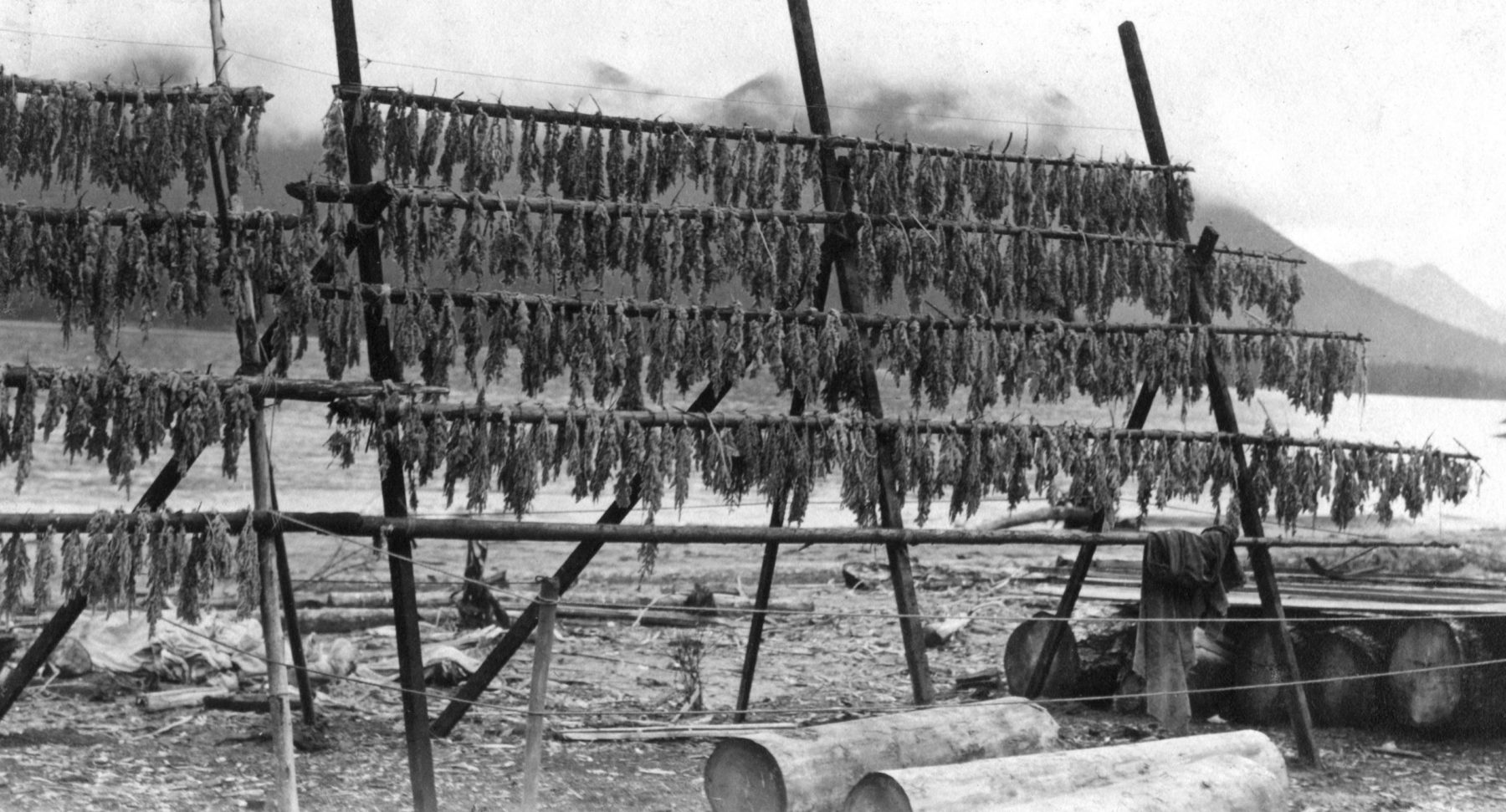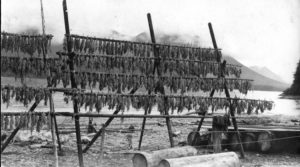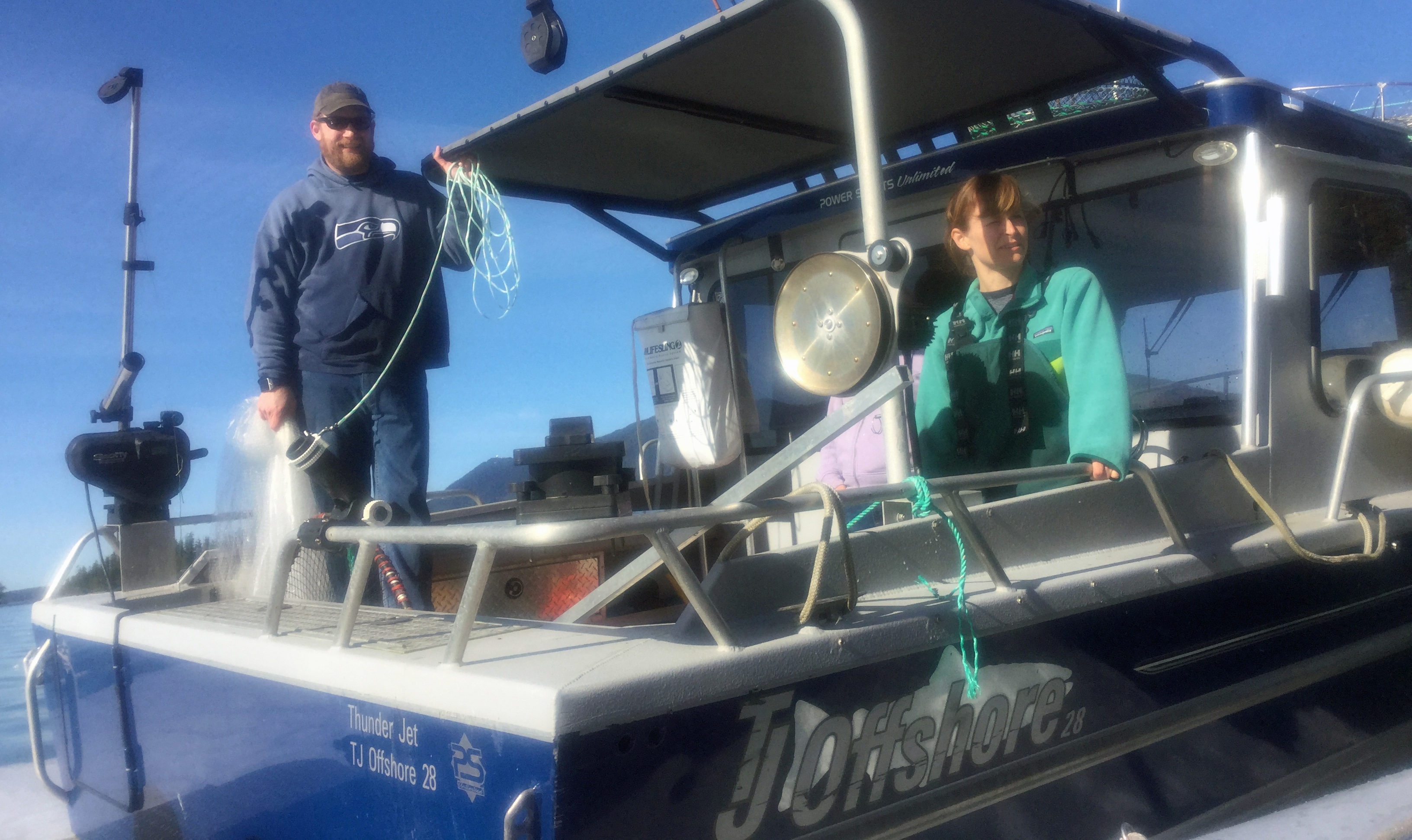
16 Mar A Consensus-based Approach to Managing ƛusmit (Herring)
This year the Nations’ fisheries managers, technicians, Nuu-chah-nulth fishers, and community members remain concerned that WCVI herring stocks are not sufficiently rebuilt to allow commercial fishing. “There is some indication that west coast of Vancouver Island herring abundance is increasing, yet there are still not enough herring for priority Nuu-chah-nulth Food and Ceremonial fisheries,” said Don Hall, Uu-a-thluk Fisheries Program Manager, at the September Council of Ha’wiih (Hereditary Chiefs) Forum on Fisheries in Huu-ay-aht Ha-houlthee (chiefly territories). Others at the table agreed.
“There’s no abundance of herring out there,” said Angus Campbell, Ahousaht Councillor. Based on several reports and observations from fishers and members on continued lack of herring and herring spawn, the Ha’wiih unanimously voted for the continued closure of commercial herring fisheries in their Ha-ha-houlthee for 2017.

Historically Nuu-chah-nulth communities counted on abundant herring spawns for siihmu (kwaqmis). Pictured here is one harvest of spawn-on-bough drying in Ahousaht territory.
The table discussed how to address the continued low level of herring abundance along with the impacts of geoduck harvesting and other resource extraction. The Ha’wiih demanded that research in these areas lead to rebuilding of herring in our Ha-ha-houlthee within three to five years. They also agreed on the importance of Nuu-chah-nulth communities reporting to DFO what they’re seeing in regards to herring abundance and spawning. One way that Nuu-chah-nulth are directly engaging with DFO and others on herring issues is through the Herring Technical Working Group. Comprised of First Nations, Industry technical staff, DFO Science, and Nuu-chah-nulth representatives, this group is assisting these various interests to balance DFO’s science with what Nations are observing on the ground. The Herring Technical Working Group meets to review data from herring assessments happening on the west coast of Vancouver Island (WCVI), and other stock areas (i.e. Haida Gwaii and Central Coast), and to share updates and collaborate on the development of science advice (biomass and annual forecasts). Jaclyn Cleary, DFO biologist, meets with the individual Nations involved and integrates their observations of where and when herring spawn is happening in each area.
“Working with First Nations in this way gives us a broader perspective as we’re looking at incorporating new forms of information from First Nations into DFO herring science and assessments,” said Cleary. Some aspects she and her colleagues examine are the age of fish, and why samples appear the same or different from previous years. “The purpose of the Herring Technical Working Group is to foster greater transparency,” she added. “Through developing relationships we’ve seen First Nations data identify key gaps and approach the data differently.”

Andy Olson, Fisheries Manager for Tseshaht First Nation and Candace Picco, Uu-a-thluk Central Region Biologist in Barkley Sound for herring training, 2016.
DFO used observations of herring spawn, biosamples and other data collected by survey charter boats in its 2016 herring assessments to model 2016 returns and 2017 forecasts. DFO compares the estimates from what they call the AM1 and AM2 models. Both models use the same data to estimate the amount of herring (in tonnes) that return to spawn and to forecast the returning herring for the following year, but analyze the data a bit differently. Last season the AM1 model estimated over 35,000 tonnes of herring returned to spawn in the WCVI Areas 23, 24, and 25, while the AM2 model estimated just under 18,000 tonnes. For 2017, the AM1 model forecasts a return of over 33,000 tonnes and the AM2 model just under 18,000 tonnes. While it is recognized both models have challenges, Nuu-chah-nulth find the results from AM2 for the past few years are more consistent with what Nuu-chah-nulth fisheries managers, technicians, fishers, and Uu-a-thluk staff are observing on the ground.
Fortunately, in keeping with the Nuu-chah-nulth recommendation, the Minister decided in December not to authorize commercial herring fisheries for the WCVI area for 2017 as was the case in 2016. Given the Liberal government’s new commitment to a national Oceans Protection Plan aimed at ensuring “environmental sustainability” and “responsible commercial use,” the Nations are cautiously hopeful that DFO will continue to listen to Nuu-chah-nulth fishers and members before reopening a WCVI commercial herring fishery.
Some view this commitment as an opportunity “…for Canada to amend laws, policies and management which together make room for the reinvigoration of Indigenous laws on fisheries governance.” (von der Porten, 2016, p. 75). The call for a more balanced approach which comprises First Nations knowledge and practice is widespread among Nations’ fisheries managers, technicians, Nuu-chah-nulth fishers, and community members.
“We have to manage a few years with surplus before we have a fishery,” said hismamin nuł (Archie Little), Councillor and Rep, Nuchatlaht First Nation at the September meeting. “To achieve that, we need traditional knowledge, not just science.”
Suzanne von der Porten, Lepovsky D., McGregor D., & Silver J. (2016). Recommendations for marine herring policy in Canada: Aligning with Indigenous legal and inherent rights, Elsevier, 68-76.
Original article was published on Ha-Shilth-Sa – Canada’s Oldest First Nation’s Newspaper on February 14th 2017.


